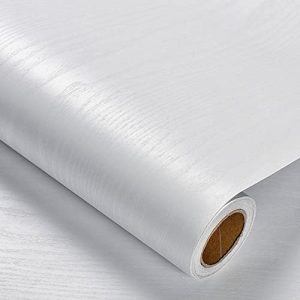If you’re new to using a table saw, it’s easy to make mistakes that can slow your progress—or worse, cause injury. But don’t worry, you’re not alone.
Many beginners face the same challenges when starting out. The good news? By spotting these common table saw mistakes early, you can save yourself time, frustration, and stay safe while working on your projects. Keep reading, and you’ll learn exactly what to watch out for and how to avoid these pitfalls every time you use your saw.
Your confidence and skills will thank you!
Incorrect Blade Setup
Incorrect blade setup is one of the most common mistakes beginners make with table saws. It can lead to unsafe cuts, damaged materials, and frustration. Understanding how to set up your blade correctly not only improves your results but also keeps you safe during your projects.
Choosing The Right Blade
Not all blades are created equal. Your choice depends on the material and the type of cut you want. For example, a blade with more teeth gives a smoother finish, perfect for plywood, while fewer teeth are better for ripping hardwood.
Think about what you’ll cut most often. Are you working with softwood, hardwood, or sheet goods? Picking the right blade saves you time and prevents unnecessary wear on your saw.
Setting Blade Height
Blade height is crucial for both safety and cut quality. Set your blade so it sticks out about ¼ inch above the material you’re cutting. Too low, and you risk burning the wood or straining the motor; too high, and you increase the chance of kickback.
I once ignored this and set the blade too high. It caused a rough cut and a scary kickback that almost injured me. Adjusting blade height carefully can help you avoid such close calls.
Aligning The Blade Properly
Proper alignment means the blade runs parallel to the fence and the miter slots. Misalignment causes uneven cuts and can bind the wood, leading to kickback. Use a combination square or an alignment tool to check your blade’s position regularly.
Have you ever noticed your cuts drift away from the fence? That’s often a sign the blade isn’t aligned correctly. Take the time to adjust it before you start cutting—it’s worth the effort.

Credit: www.youtube.com
Ignoring Safety Gear
Ignoring safety gear is one of the most dangerous mistakes you can make when using a table saw. It’s easy to underestimate the risks because the tool feels familiar or routine. However, skipping protective equipment puts you at serious risk of injury that could be easily avoided.
Using Safety Glasses
Wood chips and dust fly unpredictably when you’re cutting, and your eyes are the most vulnerable. Without safety glasses, even a small piece can cause irritation or serious damage. I once saw a fellow woodworker brush off eye protection and end up with a painful scratch on the cornea—avoid that by always slipping on a good pair of safety glasses before you start.
Wearing Hearing Protection
The noise from a table saw can be surprisingly loud and damaging over time. Many beginners ignore hearing protection because the urgency isn’t obvious at first. Think about how often you use your saw and how long you work—wearing earplugs or earmuffs helps prevent permanent hearing loss, something you won’t regret until it’s too late.
Avoiding Loose Clothing
Loose sleeves, dangling jewelry, or untied hair can easily get caught in the blade. This risk is often overlooked in the excitement of starting a project. Make sure your clothing is snug and remove any accessories—your safety depends on keeping clear of moving parts.
Poor Workpiece Handling
Poor workpiece handling is a common mistake for many table saw beginners. It can lead to inaccurate cuts, damaged materials, or even accidents. Knowing how to manage the workpiece correctly ensures safety and precision. Below are essential tips to improve your handling technique.
Maintaining A Firm Grip
Always keep a steady and firm grip on the workpiece. Loose handling increases the chance of uneven cuts or loss of control. Position your hands away from the blade and apply consistent pressure. This helps maintain stability and prevents the material from shifting unexpectedly.
Using Push Sticks
Push sticks are vital for guiding smaller workpieces through the blade. They keep your hands at a safe distance and improve control. Choose a push stick with a comfortable grip and durable material. Use it to maintain steady pressure against the fence while feeding the workpiece forward.
Preventing Kickback
Kickback occurs when the workpiece gets caught and is forcefully ejected. To avoid this, ensure the workpiece stays flat against the table and fence. Use a riving knife or splitter to keep the cut sections aligned. Avoid standing directly behind the workpiece to reduce risk.

Credit: www.731woodworks.com

Credit: www.youtube.com
Frequently Asked Questions
What Are Common Table Saw Mistakes Beginners Make?
Beginners often make mistakes like improper blade alignment, incorrect material feeding, and neglecting safety measures. These errors can cause accidents or uneven cuts.
How Can I Avoid Kickback On A Table Saw?
To avoid kickback, use a riving knife and ensure the fence is aligned. Feed materials steadily and avoid over-forcing them.
Why Is Blade Alignment Important For Table Saw Use?
Blade alignment ensures accurate cuts and prevents binding or kickback. Regularly check and adjust the blade for optimal performance.
What Safety Gear Should I Use With A Table Saw?
Safety gear includes eye protection, ear protection, and gloves. Use a push stick to keep hands away from the blade.
Conclusion
Avoiding these common table saw mistakes keeps you safe and confident. Always double-check your setup before cutting. Use proper techniques to get clean, precise cuts every time. Practice makes your skills better and reduces errors. Stay focused and never rush your work.
Safe habits protect you and your tools. Keep learning and improving with each project. Your table saw can be a helpful partner in woodworking. Simple steps lead to great results and less frustration.








